VOSGES - Senones - La Roche Mère Henry
Year of visit: 2009
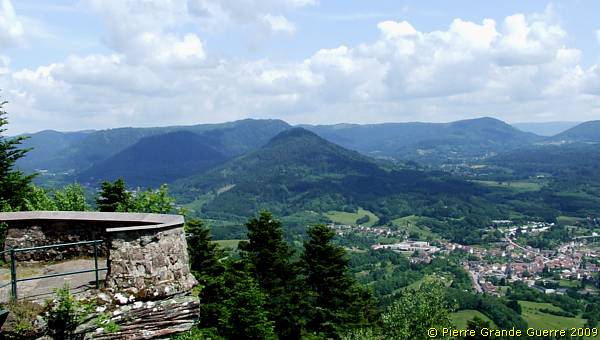
From Ban de Sapt along the D 49 northward to Senones for a visit to the French and German War Cemeteries at la Poterosse, to some German bunkers at the slopes of the Côte de Senones , like Les Quatres Bancs, and a few panorama views, photographed from the Roche Mère Henry.
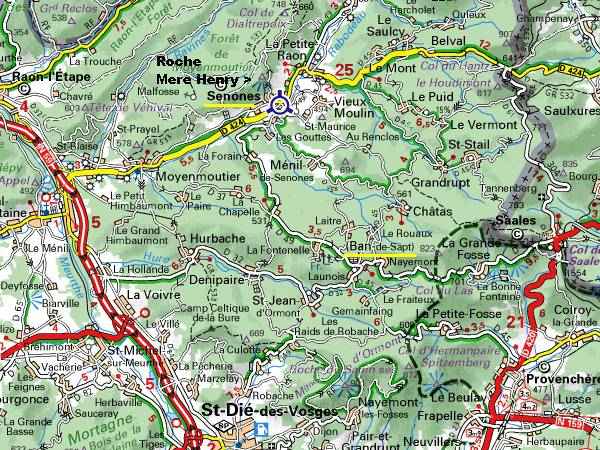
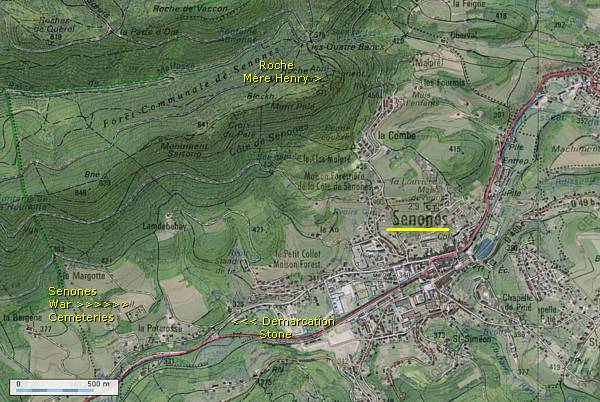
A view at the height of "Côte de Senones ", close to the former frontlines.
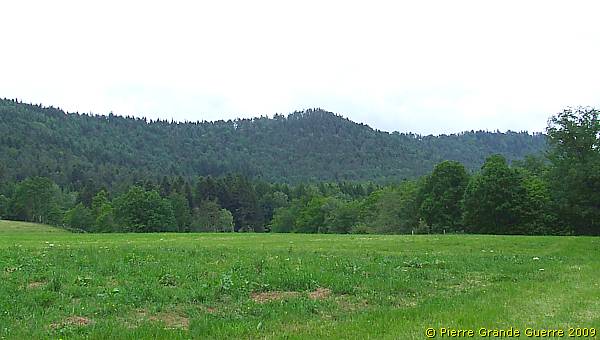
Along a road on the western outskirts of Senones we detect this after war demarcation stone.

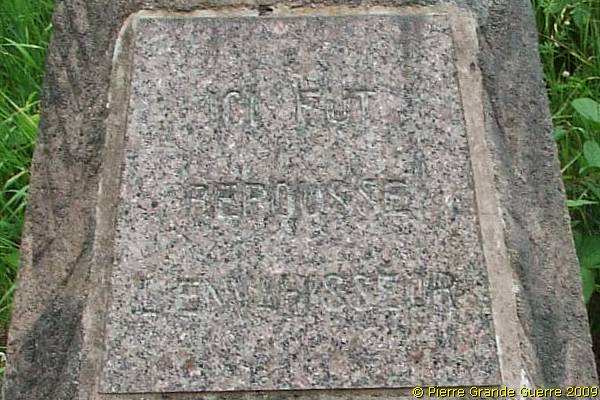
At the foot of the Height of Senones...

... lie the French and German War Cemeteries next to each other. The inhabitants of Senones call this location " La Poterosse ", after the hamlet at the western outskirts of Senones.
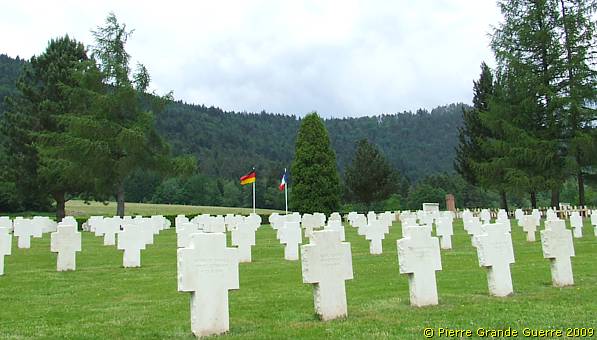
We start our visit with the western, German cemetery.
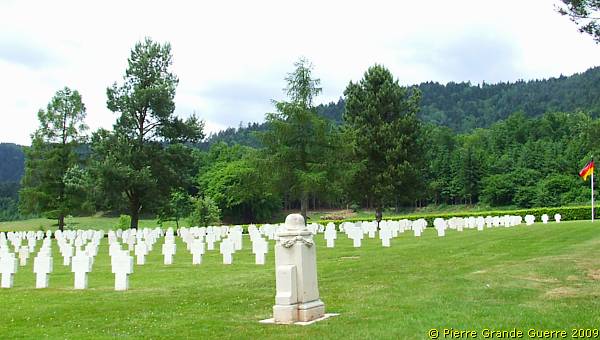
The German War Cemetery or Kriegsgräberstatte Senones contains 1.528 German burials. Of the 1.528 soldiers 784 are buried in a grave, and 22 individual soldiers of them are unknown. The mass grave contains the remains of 744 killed soldiers, only 348 of them are known by their name.
The " Schlacht in Lothringen " or the "Battle of Lorraine" from 25 to 28 August 1914, the defensive fighting in the winter 1914-1915, the trench warfare of 1915, and the war in late 1918 increased the number of dead in this front sector. After 1915 The army units were here “at rest”. After 1915 there were no great battles anymore, but the artillery bombardments and skirmishes continued. Soldiers, buried here, came from garrisons in Bavaria, Baden, Hessen, Hanover, Brunswick, Ostfriesland , Wurttemberg, Westphalia, Thuringia, Brandenburg, Silesia and the Rhineland.
Some samples of the graves to be found on this cemetery.
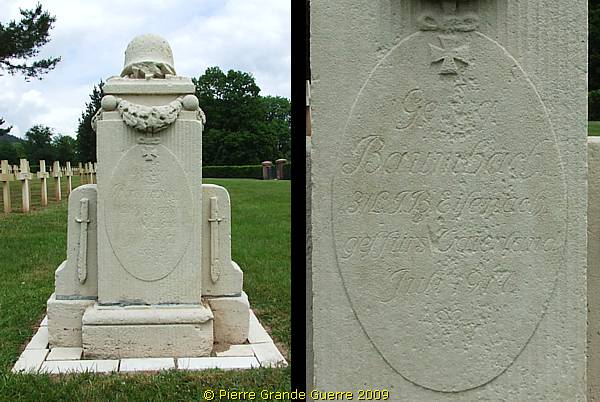
Two graves of 1914. The Hebrew words on the grave of the Jewish Emil Siegel mean above the name: "Here rests" , and below the name: "May his soul stay interwoven to the circle of the living."

Instead of their traditional duties, doing construction works or guarding prisoners, even the often more older soldiers of the Bavarian Landsturm, ...

... attached to Bavarian Landwehr and Ersatz units, also had to actively fight in the positional war of the Vosges, and of course could also get killed.
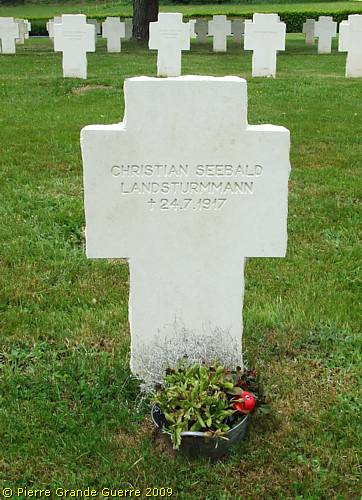
In the middle lies the grave of a Wehrman , Karl Bohn, fallen on 20 September 1914.
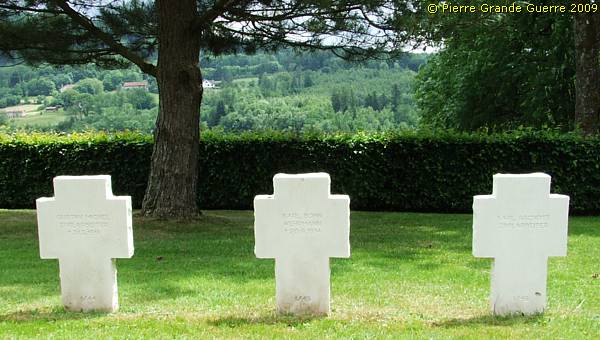
The other two graves contain each the mortal remains of a civilian worker.

Ernst Israel was a war volunteer. ("Kriegsfreiwilliger")
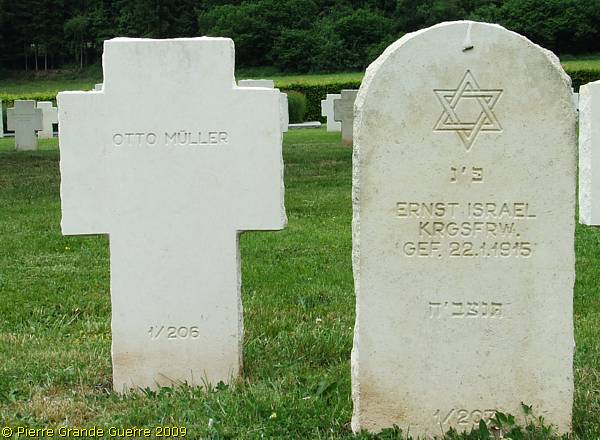
"ARMIERUNGSSOLDAT": a soldier constructing (concrete) bunkers.
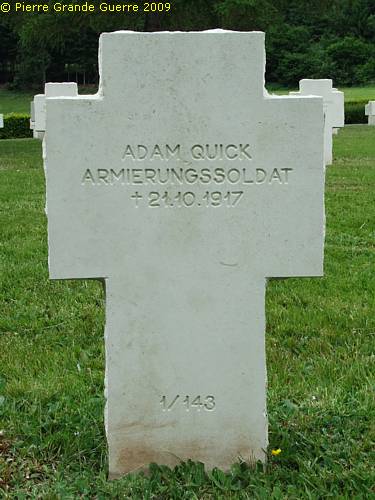
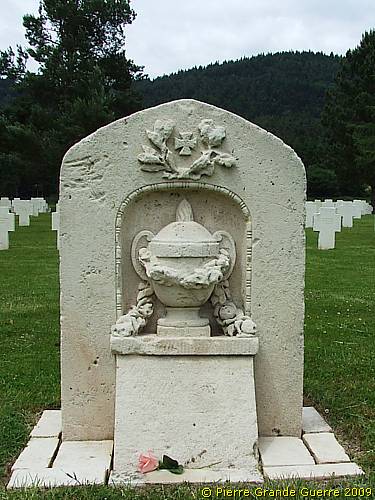
On the northern edge of the cemetery lies the mass grave:
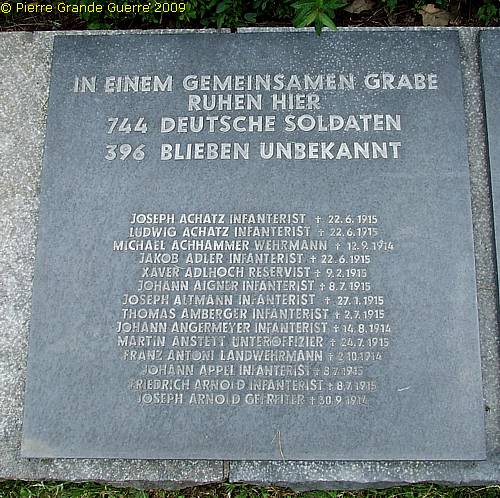
A long list of names, inscripted in 14 bronze plaques.
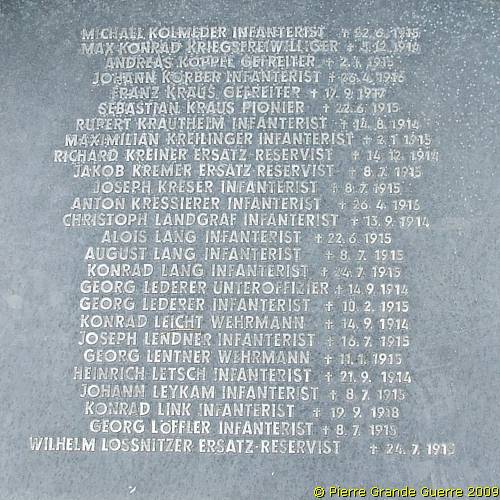
View from the mass grave north-eastward to the Côte de Senones.
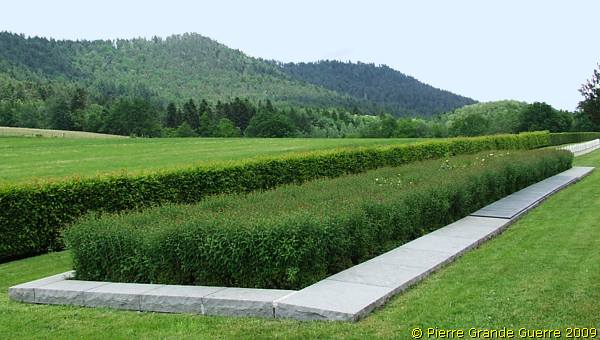
Senones August - November 1914
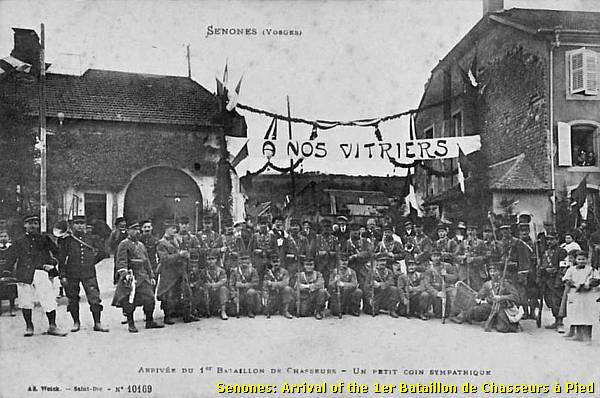
Before 1914 Senones used to be a French border town near the 1871-1918 border. Traditionally Senones was the garrison town of the 1e Bataillon Chasseurs à Pied. Early in the war, in August 1914, the 1e B.C.P. left Senones to fight in the area on and around the Col de la Chipelotte . Senones was left without any defence.

The German opponents - 30. Bayerische Reserve-Division
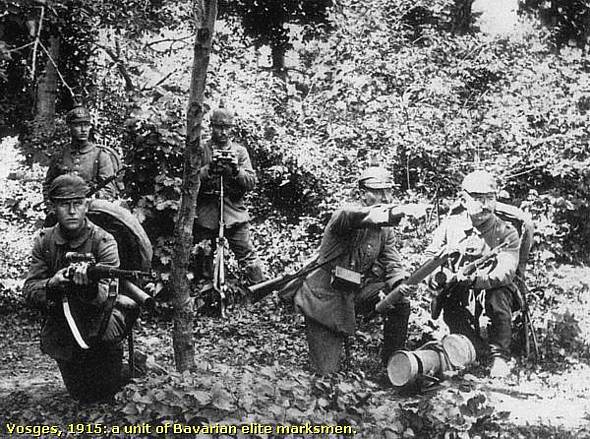
On 25 August 1914 the Germans entered
Senones
on their march on St.
Dié
des Vosges. After the
Battle at la
Chipotte
, at 12 September
1914, units of the 30th Bavarian Reserve Division (30.
Bayerische
Reserve-Division)
withdrawed
passing the defenceless town of
Senones
, to
return in the evening to occupy the town.
From 18 August 1914, the 30. Bayerische Reserve-Division consisted of:
10. bayerische Reserve-Infanterie-Brigade , Kgl. Bayerisches 11. Reserve-Infanterie-Regiment , 14.Radfahrer-Abteilung, Festungs-MG-Kompanie Nr. 2, Reserve-MG-Abteilung Nr. 3, 5. bayerische Ersatz-Brigade, Bayerisches Brigade-Ersatz-Bataillon Nr. 5 (mob.Ers.Btl./Kgl. Bay. 23.Inf.Regt.), Bayerisches Brigade-Ersatz-Bataillon Nr. 6 (mob.Ers.Btl./Kgl. Bay. 18.Inf.Regt. Prinz Ludwig Ferdinand), Bayerisches Brigade-Ersatz-Bataillon Nr. 7 (mob.Ers.Btl./Kgl. Bay. 5.Inf.Regt. Großherzog Ernst Ludwig von Hessen), Bayerisches Brigade-Ersatz-Bataillon Nr. 8 (mob.Ers.Btl./Kgl. Bay. 8.Inf.Regt. Großherzog Friedrich II. von Baden), Kavallerie-Ersatz-Abteilung Landau/II. Bayerisches Armeekorps (⅓ Eskadron), Kgl. Bayerisches 2. Feldartillerie-Regiment, 1. Ersatz-Batterie/Kgl. Bayerisches 12. Feldartillerie-Regiment, Ersatz-Abteilung/Feldartillerie-Regiment Nr. 80, 1.Ersatz-Batterie/Feldartillerie-Regiment Nr. 84, 3.Batterie/Reserve-Feldartillerie-Regiment Nr. 14.
On 26 December 1916 the Division was renamed the 30th Royal Bavarian Reserve Division. It spent it's time during the whole war in positional warfare in the Vosges mountains and the Alsace-Lorraine region.
The French opponents - 363e R.I. and the 37e
Régiment
d'Infanterie
Coloniale
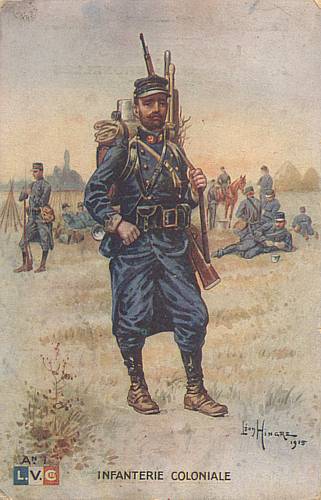
From 19 September 1914 the French 363e R.I. under command of Lt. Colonel D.H. Chan and the 37e Régiment d'Infanterie Coloniale under command of Lt. Colonel P.J.A. Couzineau occupied the lines west of Senones . Both units belonged to the 152e Infantry Brigade of the 41st Division.

In October 1914 the Bavarians already started to construct
fortifications and masonry bunkers, of course permanently observed by the
worried French. Begin November the 152nd Infantry Brigade was already
planning an operation at the German positions at the Height of
Senones
and the area around the Roche
Mère
Henry.
19 November 1914 - Attack at Côte 675
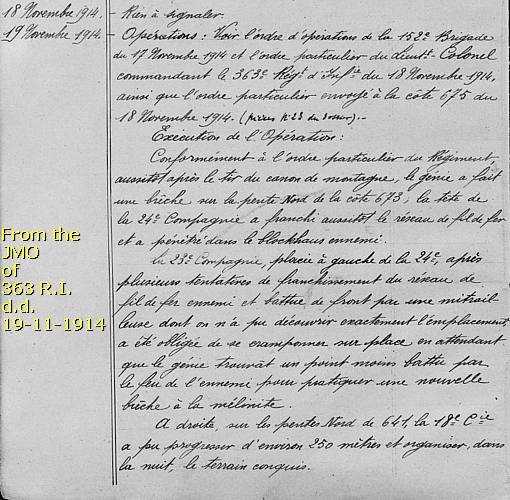
On 19 November the 363e R.I. attacked Height 675, west and some few
hundred metres away from the rock
Mère
Henry.
The target of the attack was to capture the German Bunker at Height 675. Advanced troops of the Génie blew a breach in the barbed wire entanglements of the Bavarians. The infantry followed and jumped off from the trench, south of Les Quatres Sapins; in the centre of the sketch below.
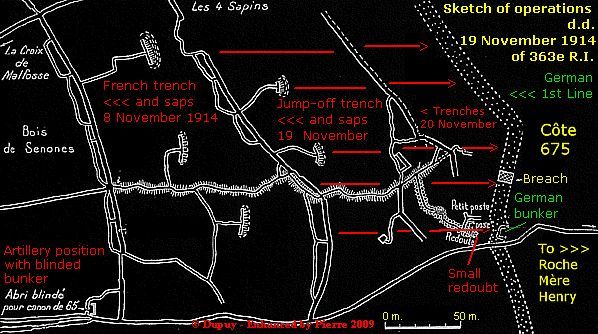
The 363e. R.I. succeeded to capture the " Blockhaus " or bunker on Height 675 in the evening. The 363e R.I. had to count or rather "estimate" that day 42 casualties; 17 soldiers dead, 23 injured, and 2 "disappeared".
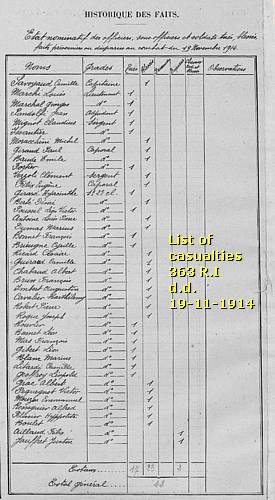
The 363e R.I. and the 37e R.I.C. would occupy the height until 10 December 1914, when they blew up the masonry bunker and withdrawed to the lines of 20 November, projected on this sketch. These lines would form the front line west of Senones until the end of the war.

We now pay a visit to the French Nécropole Nationale de Senones.
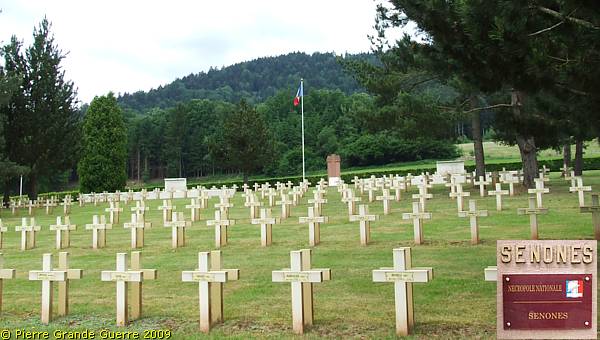
The Nécropole Nationale de Senones contains the graves of 795 French Soldiers, including colonial soldiers. 372 Of these soldiers are buried in 2 ossuaries . Quite remarkable; there also buried 6 Poles, 11 Rumanians and 6 Russians.
The human remains are collected from battlefields in the area around, like Bois du Palon , Bois "Y", la Scierie de Malfosse , la Chapelle de la Halte , the nearby Mère Henry, the Haute- Forain , etc.
Later we will detect memorials and graves, reminding us of the former presence of the 363e. R.I. and the 37e R.I.C.
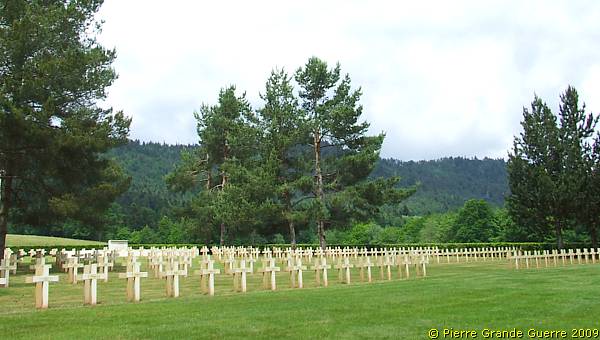
Some graves of soldiers from Indo China, nowadays Vietnam, of the 7e Bataillon Indochienois, fallen in 1917 and 1918.

One of the two ossuaries containing the human remains of 186 soldiers.
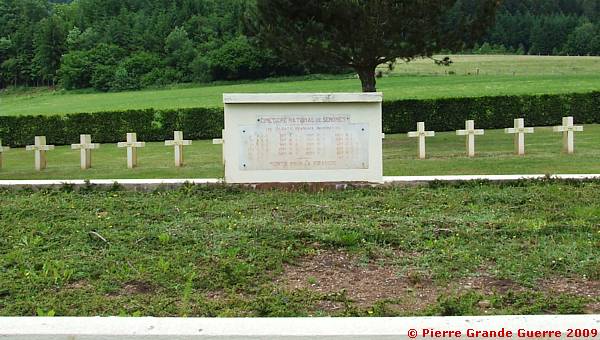
The list of units on the plaque gives us an impression of the other French units, which were active in this front sector.
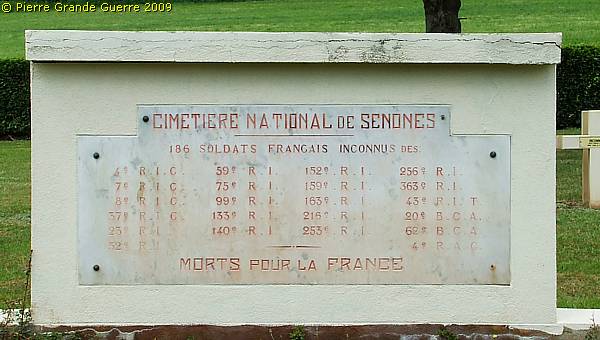
Three Russian graves tell us more about the deployment of units of foreign troops here at the end of the war.

After October 1917 these Russian soldiers "Died
for France".
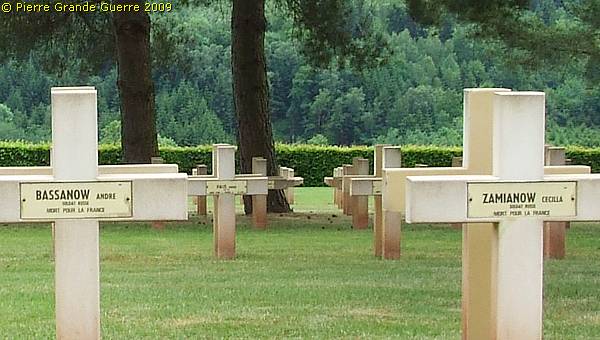
(I explain the presence of Russian soldiers along the Western Front in my photo impression about the Russian Cemetery at St. Hilaire le Grand , Champagne.)

Michael Maximow died for France and belonged to the "18e Bataillon de Travailleurs Russes" or 18th Batallion of Russian Workers.
The second ossuary contains also 186 persons.

The same text on this plaque as on the first one, which tells us a little about how hopeless the identification procedures must have been. Besides the presence of regular infantry regiments, the plaque tells us also about the former presence of other Colonial Regiments, and Battalions of Chasseurs Alpins.
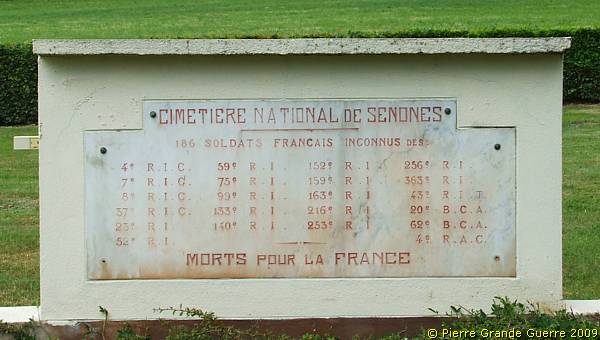
Two of the Rumanian graves of soldiers of the 54e R.I. Roumain.

Two graves of Polish soldiers. Left : the grave of Second Lieutenant Mille Roman of the 3e Régiment des Chasseurs Polonais. Right: a soldier, named Francize Davotak, of the 1e Régiment des Chasseurs Polonais.
(I
explain the presence of Poles at the Western Front in my photo impression about
La
Targette
.)
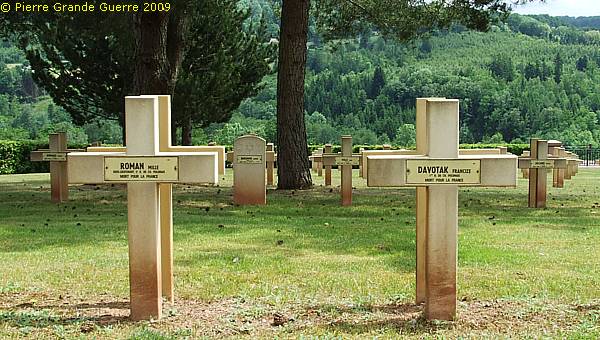
On 18 June 1915, on a rather quiet day at the front, even the Commander of the 37e R.I.C., Lt. Colonel Paul Cozineau, ...

... "was killed by a bullet in the forehead".

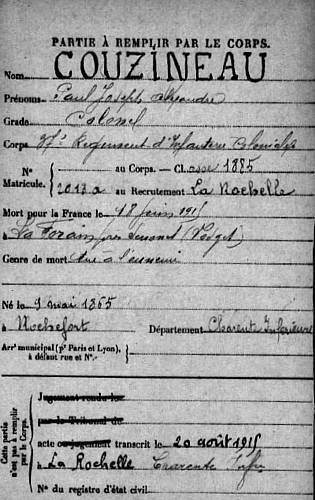
A modest memorial to commemorate the 363e R.I.:
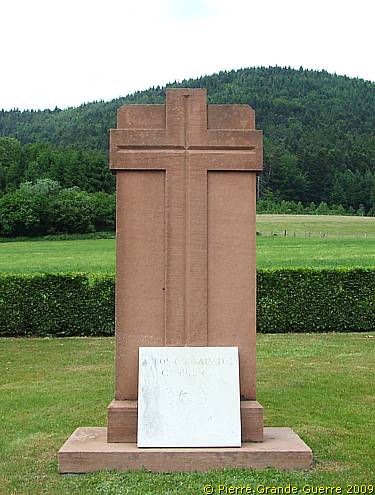
We leave the cemeteries of la Poterosse to continue our exploration.
From the cemeteries of la Poterosse,
we follow a route, north of Senones, climbing along
the eastern slopes of the Côte de Senones
to the
Roche Mère Henry ( "Mother Henry Rock "
),
in the former German lines to search for relics. I do realise that this impression
gives not a complete image, because there are more relics on
the Côte des Senones to explore, than we could
cover during this trip.

On the west side of the nameless, meandering road to a location, called "Les Quatres Bancs", stands this Bavarian bunker.

Inside the small bunker the relics of a stove.
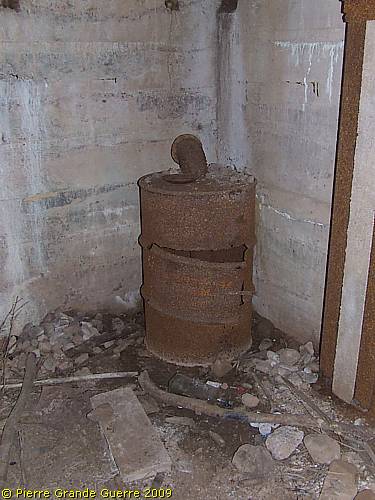
Probably it has been used as a guard post.
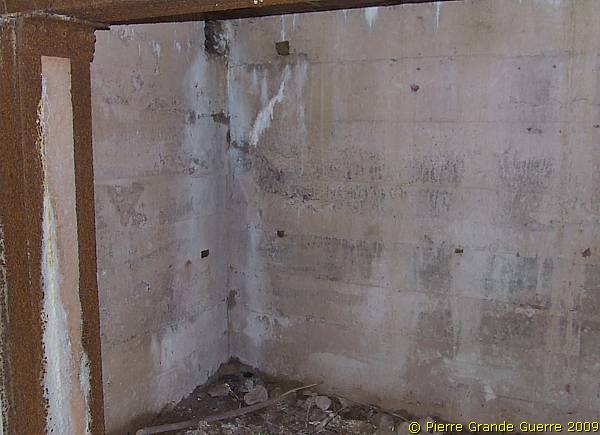
Only one rifle hole is guarding the narrow road.
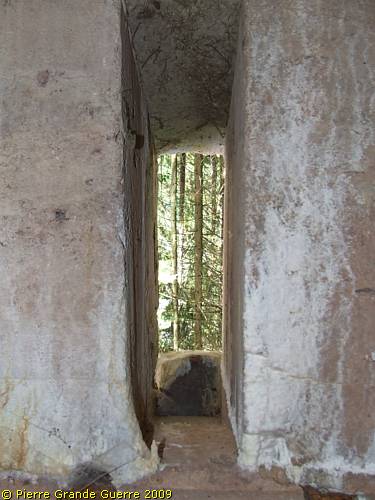
Some few hundred metres more northward we detect two "twin" bunkers next to each other.
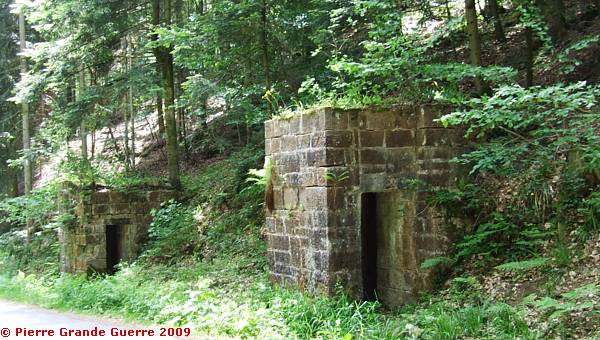
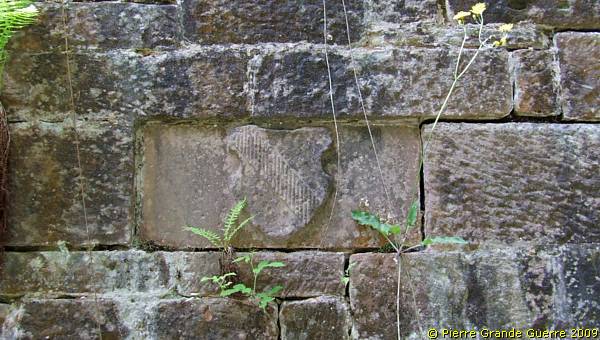
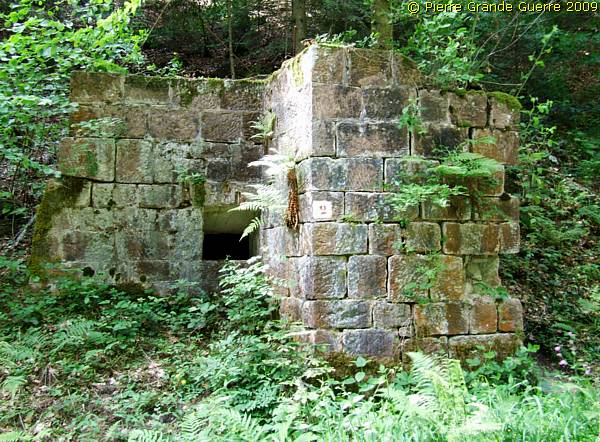
As always I have to enter the left bunker.
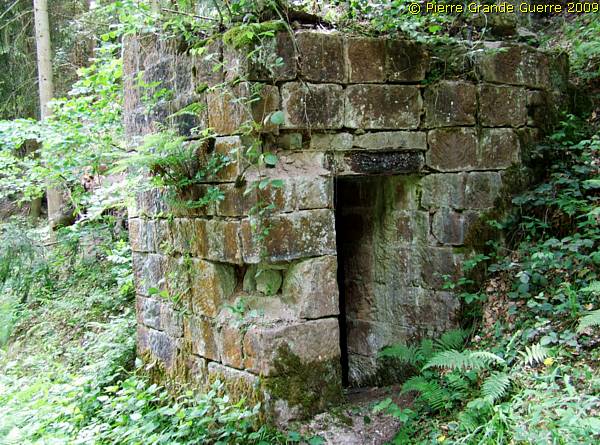
The interior with at the rear the entrance of a filled in tunnel, running inside the height.
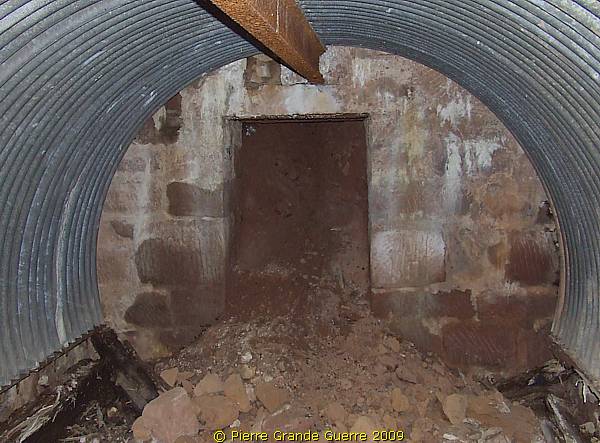
There is only one hooked entrance and one window.
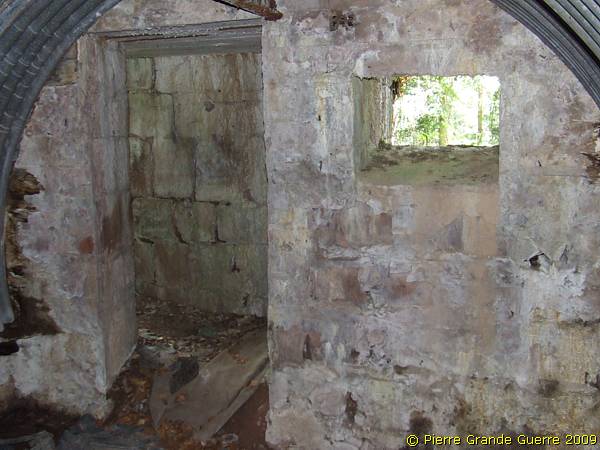
The bunker next to it is of the same sizes as the left one.
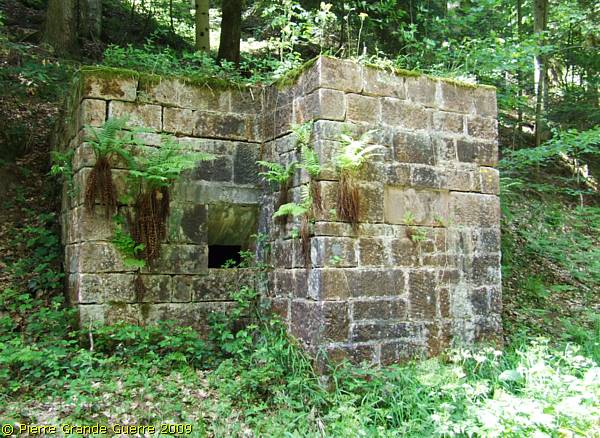
This one has also an entrance to a filled in tunnel, possibly leading to other tunnels and dug-out caves.
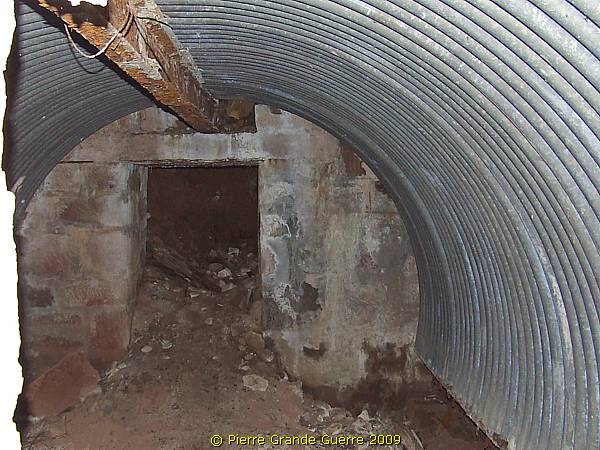
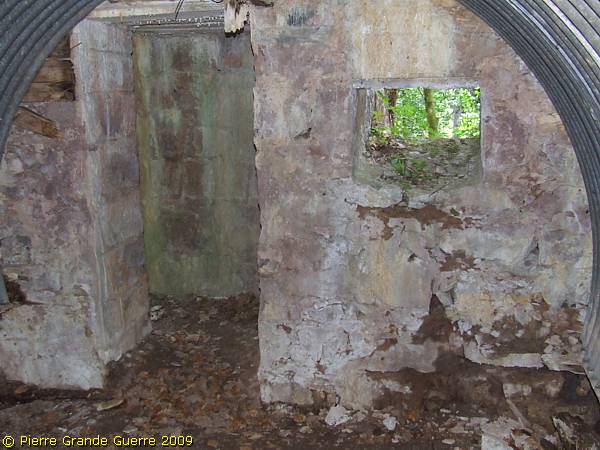
We leave the Bavarian twin bunkers ...

... and again some few hundred metres further on we spot another shelter bunker with a rather large window and a tunnel entrance inside.

Just before the hair pin curve we spot another tunnel entrance with concrete and steel beams.

At an open spot in the wood, at a junction of different paths, is the location of Les Quatres Bancs . From here we continue on foot.
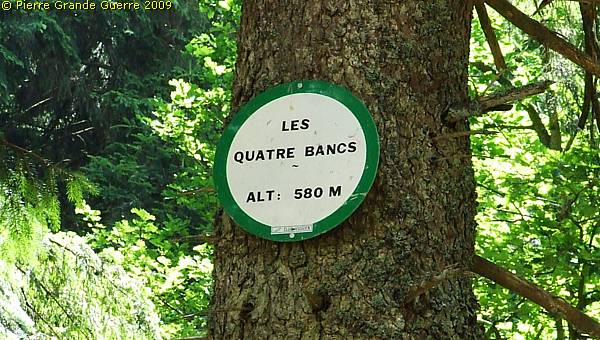
Near and below this tree with the sign stands a rather large bunker.
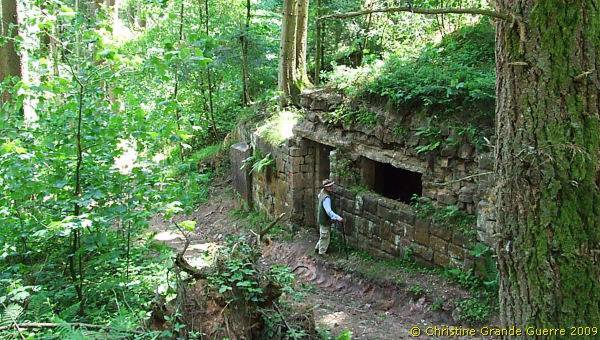
Masonry, a mix of natural stones and concrete bricks.
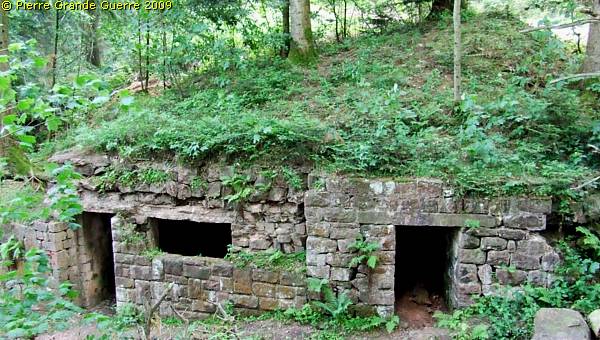
The interior with windows overlooking two directions.
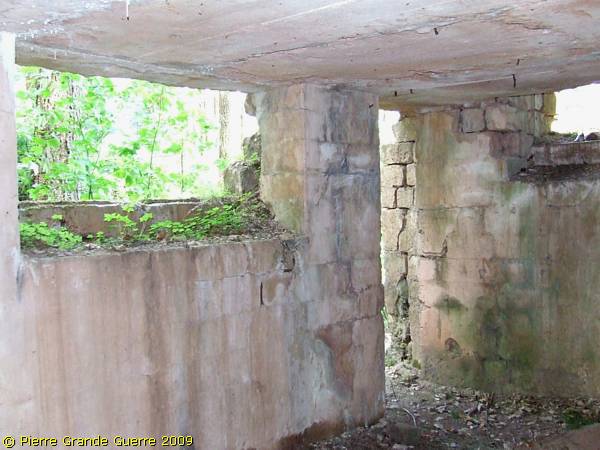
In the south-eastern corner a tunnel entrance.
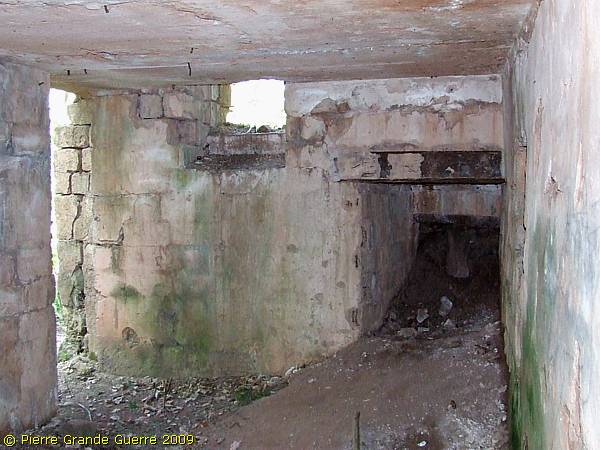

In the north-western corner another tunnel entrance.

We leave this bunker at les Quatres Bancs ...
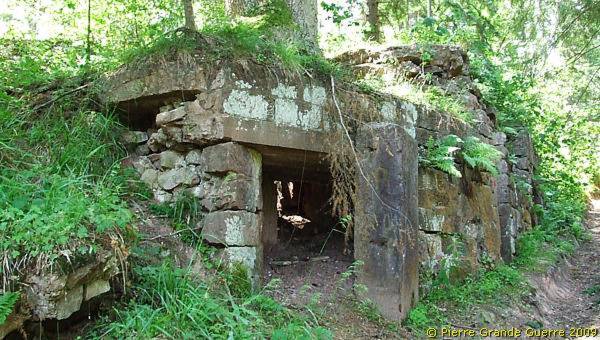
... passing this sculpted sign, ...
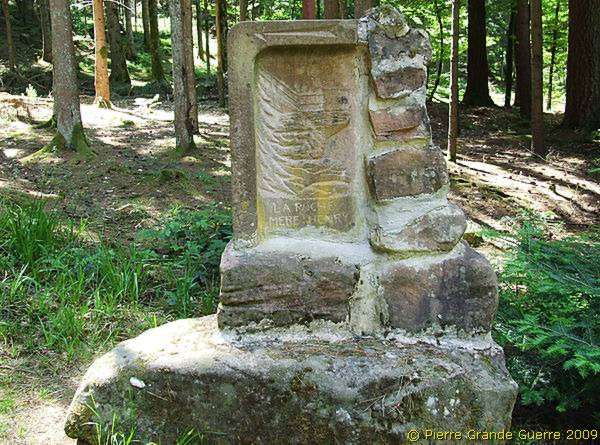
... to climb our way up to the Roche Mère Henry.

Higher up there is another masonry bunker...

... fortified with steel H-bars ...
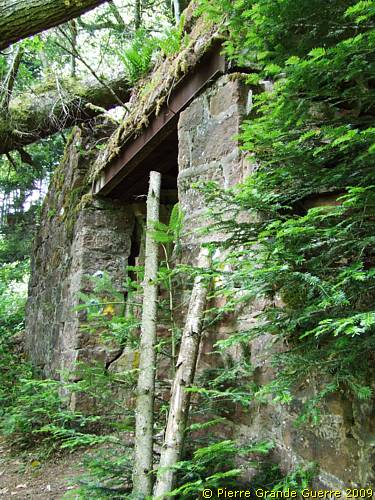
... and a collapsed top construction.
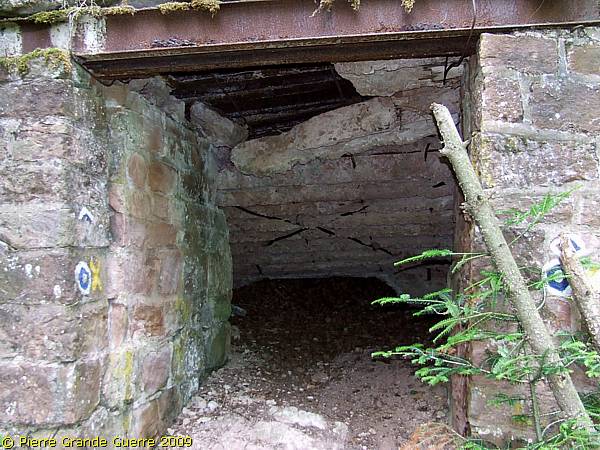
Perhaps nature and in particular this fallen tree damaged the roof?
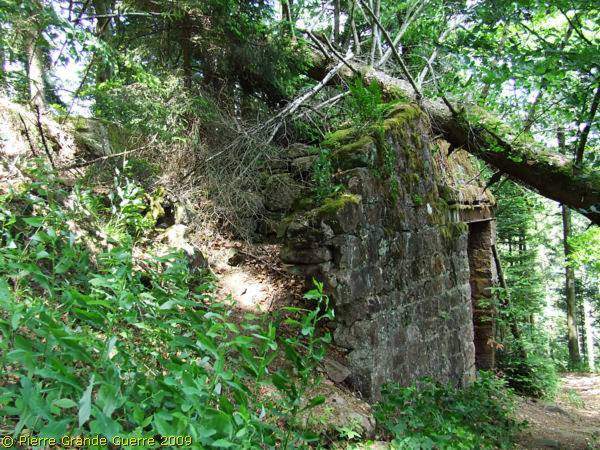
We continue to follow the meandering path upward.
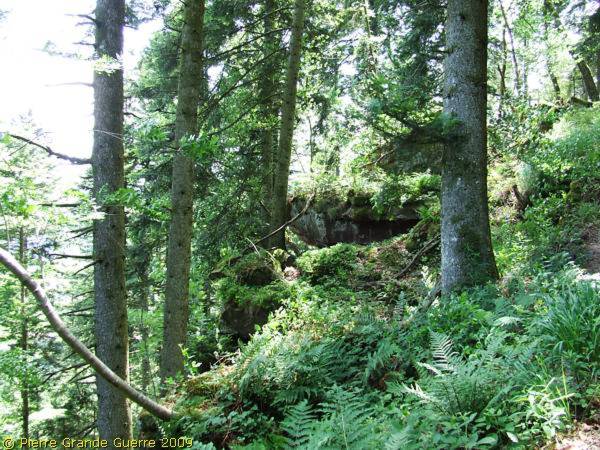
Near the summit there are more bigger rocks.

We approach the rock from north-east, at "the rear side".
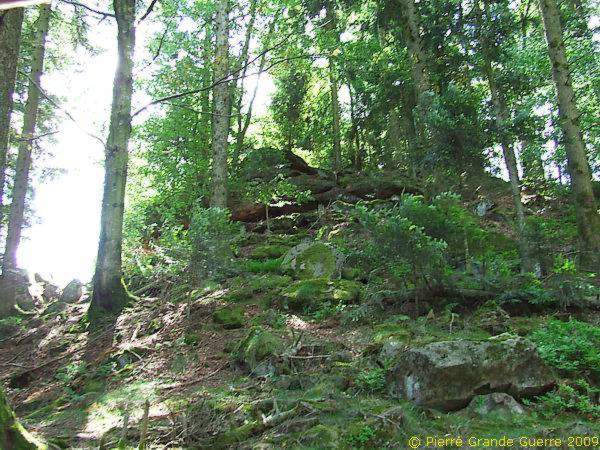
Some 8 metres under the summit of the rock, la Roche Mère Henry ...
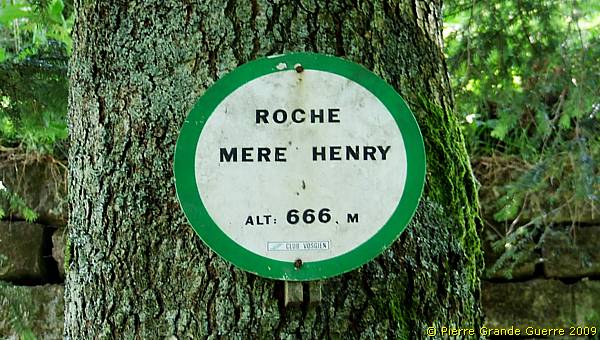
Just under the foot of the left one of the twin rocks ...
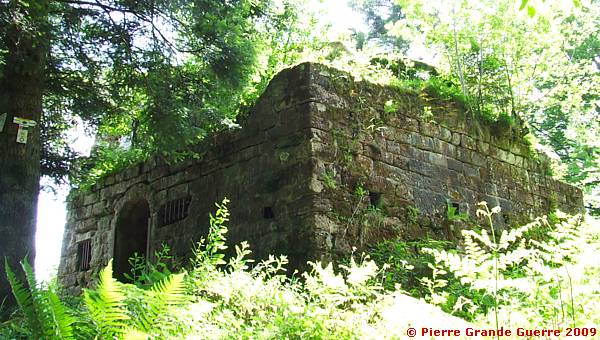
... the Bavarians dug out a bunker in the foot of the northern rock, ...
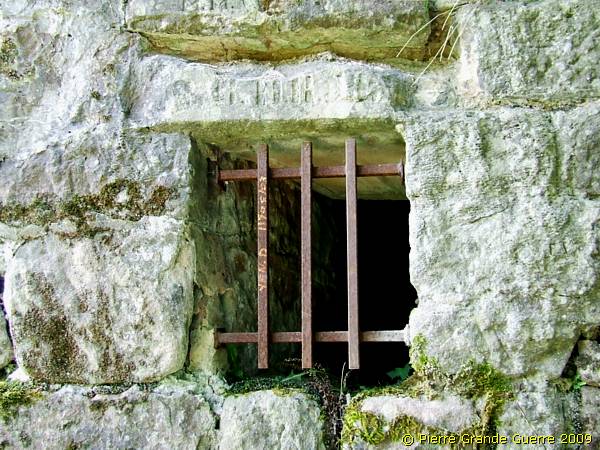
... and fortified the outside walls, only there where necessary, with masonry stones.

The soldiers had still some 3 or 4 metres of rock ...

... above their heads to protect them.
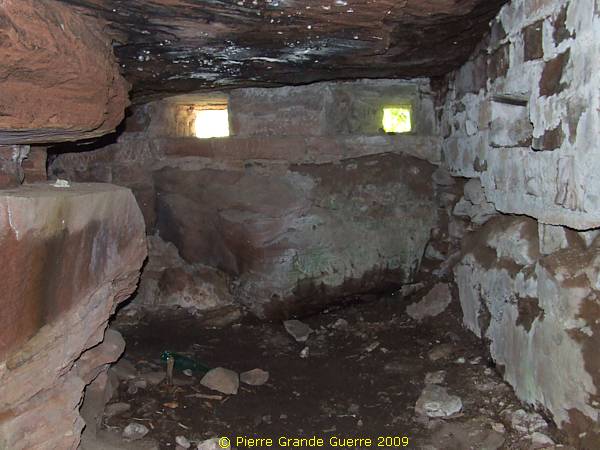
Rifle holes northward and eastward.
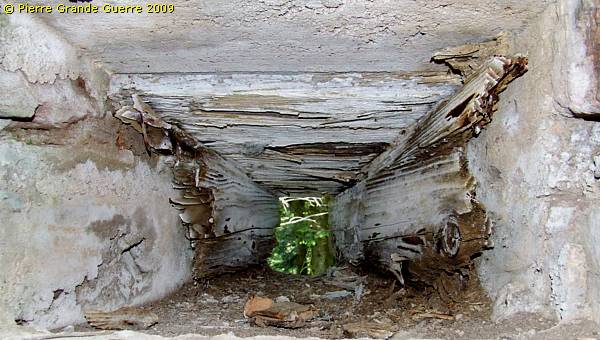

This bigger window served possibly as an observation post south-eastward.

I move around the foot of the rock to follow ...

...the outlines of the bunker.
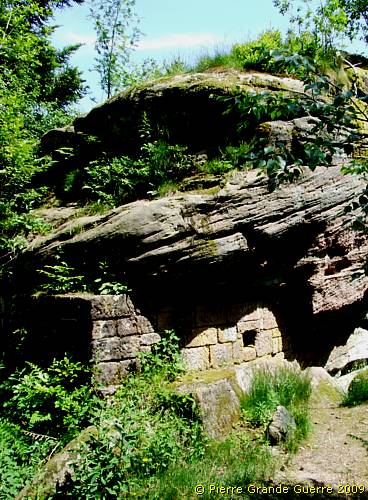
View at the Roche Mère Henry from the foot of the southern rock.
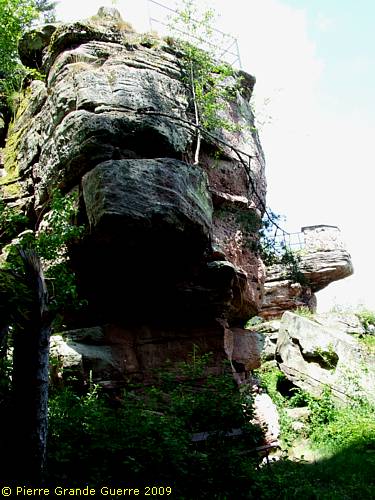
La Roche Mère Henry
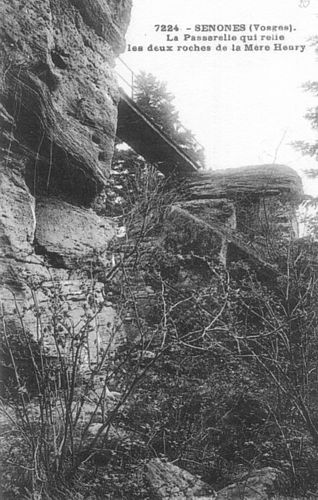
Since 1871 the twin rocks of the Roche
Mère
Henry attracted already French tourists. To have a perhaps better view of the
overwhelming panorama on top of the rocks, the inhabitants of
Senones
constructed at the end of the 19th
century a wobbly, steel bridge between the two rocks.
On top of the eastern rock I have to rest, ...
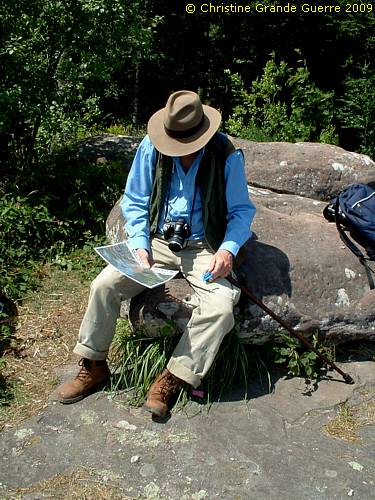
.. and I try on the spot to reconstruct for you this panorama with map and compass.
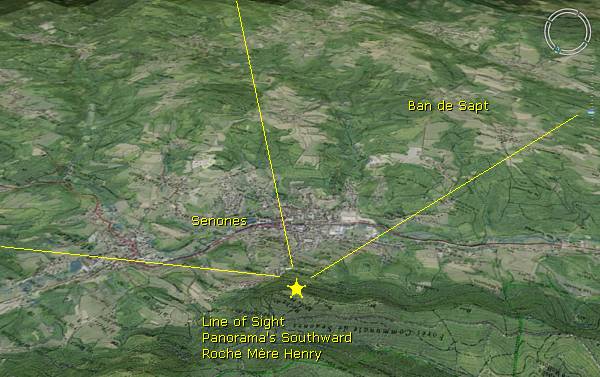
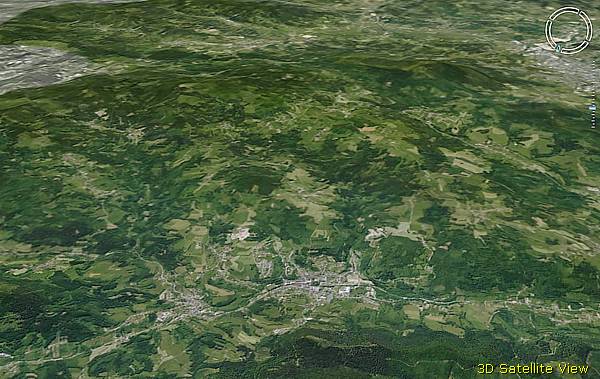
A view to the north over the top of the northern rock.

Standing on the uncomfortable, wobbly steel plate bridge, looking eastward.

Panorama north-eastward and east from the more stable, southern rock.
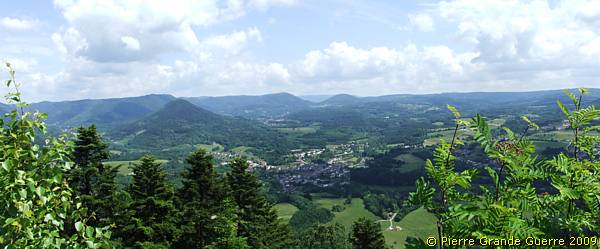
Again: a look closer in two steps from left to right.
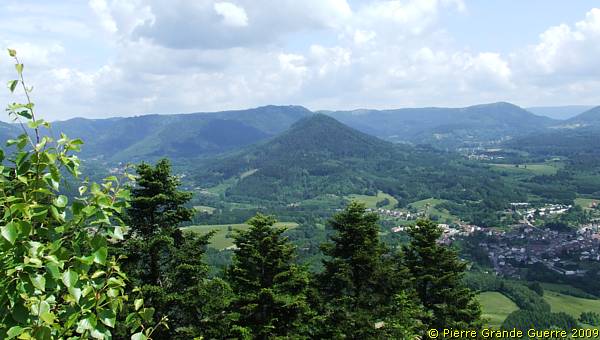
Of course the town in the foreground is Senones.
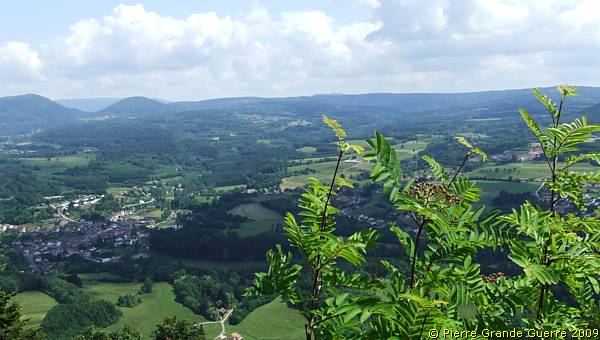
View from the northern to the southern rock.
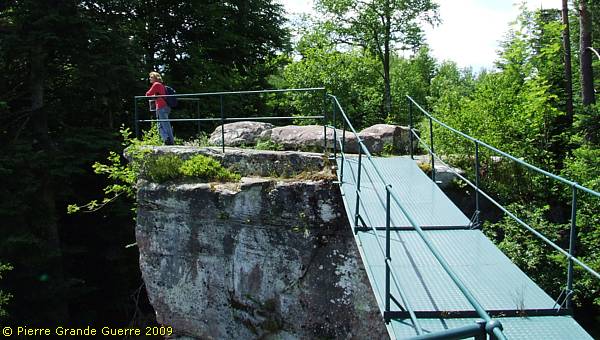
A closer bird's eye view of Senones.
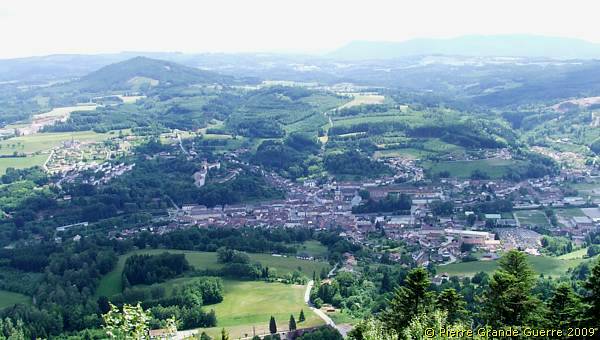
Teleview at the centre of the town.
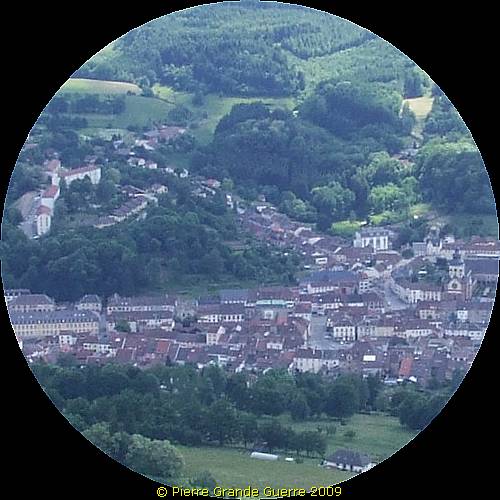

Panorama view east and south-east.
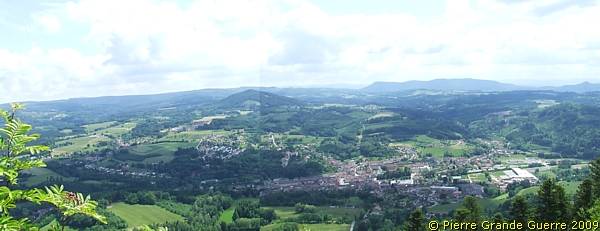
Again from left to right in three steps...

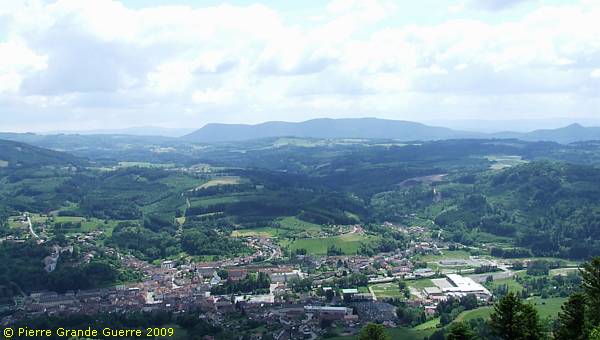
The third panorama detail offers a view at Ban de Sapt - la Fontenelle.

We continue our explorations to other sites in the Northern Vosges.
Continue to: " Cols de la Chipotte - Chapelotte - Col du Donon "










